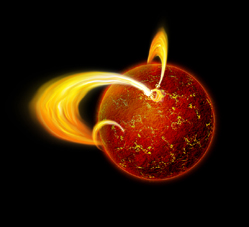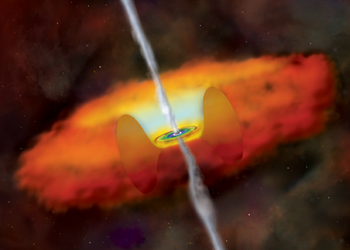CHEAR
CHEAR is an acronym for Canadian High Energy Astrophysics Research and it comprises a group of researchers, primarily located at Canadian institutions, that seeks to champion high-energy astrophysics research in Canada. This group is responsible for promoting interactions amongst researchers in Canada and internationally, and to devise strategic plans with respect to Canadian involvement in future space missions.
CHEAR is comprised of researchers from various universities and research institutes from across Canada. This includes:

St. Mary's University
Bishop's University
McGill University
Universite de Montreal
University of Toronto
University of Waterloo
University of Western Ontario
University of Manitoba
University of Alberta
University of Calgary
University of British Columbia
University of Victoria
National Research Council (HIA)
CHEAR is also supported by funds from the Canadian Space Agency in the form of a Disciplinary Working Group (DWG) grant.
High Energy Astrophysics
 High Energy Astrophysics (HEA) is among the fastest growing areas of astronomy in Canada today. The Mid-term Review of the Canadian Long-Range Plan (LRP) in Astronomy comments, with regard to the growth of HEA, that "these developments have the potential to lead the way to a new area of exciting space astronomy in Canada." Among all areas of astronomy, HEA is especially dependent on space missions as X-rays do not penetrate the atmosphere.
High Energy Astrophysics (HEA) is among the fastest growing areas of astronomy in Canada today. The Mid-term Review of the Canadian Long-Range Plan (LRP) in Astronomy comments, with regard to the growth of HEA, that "these developments have the potential to lead the way to a new area of exciting space astronomy in Canada." Among all areas of astronomy, HEA is especially dependent on space missions as X-rays do not penetrate the atmosphere.
The Disciplinary Working Group has as its focus HEA, which encompasses the study of the most extreme objects and events in the Universe, ranging from neutron stars, including pulsars, magnetars, and accreting systems, to black holes, including stellar-mass, intermediate-mass, and supermassive, from massive stars to supernovae, supernova remnants and gamma-ray bursts, from active galactic nuclei (AGN) to galaxy clusters. HEA spans the Universe, from the local to cosmological, from compact to colossal.